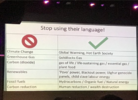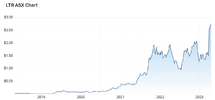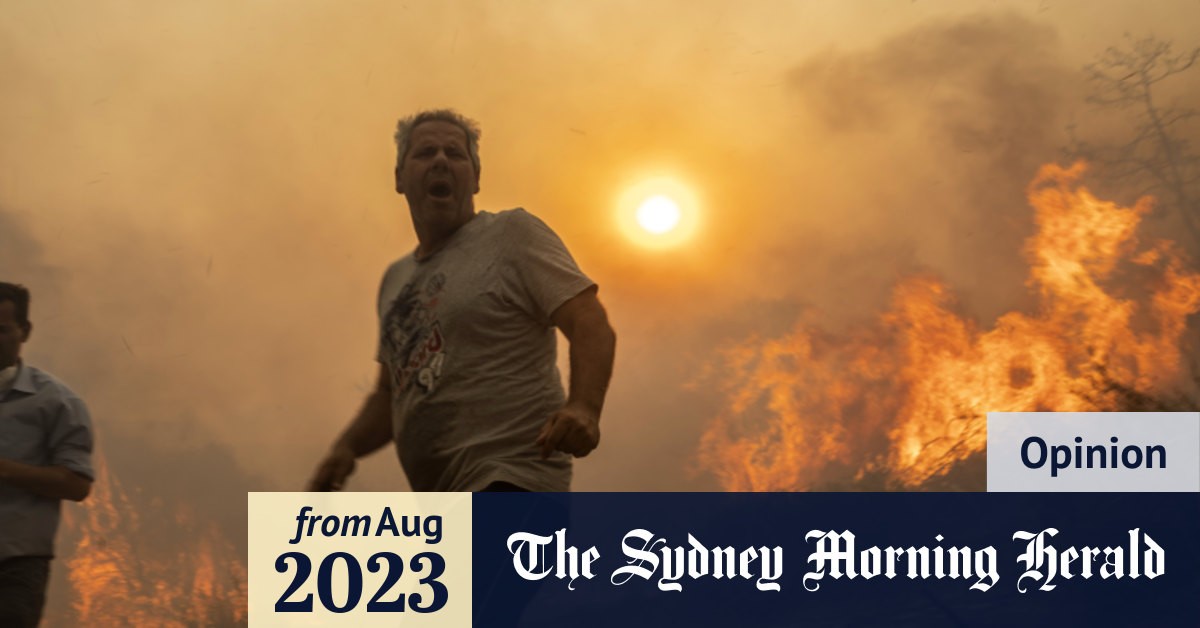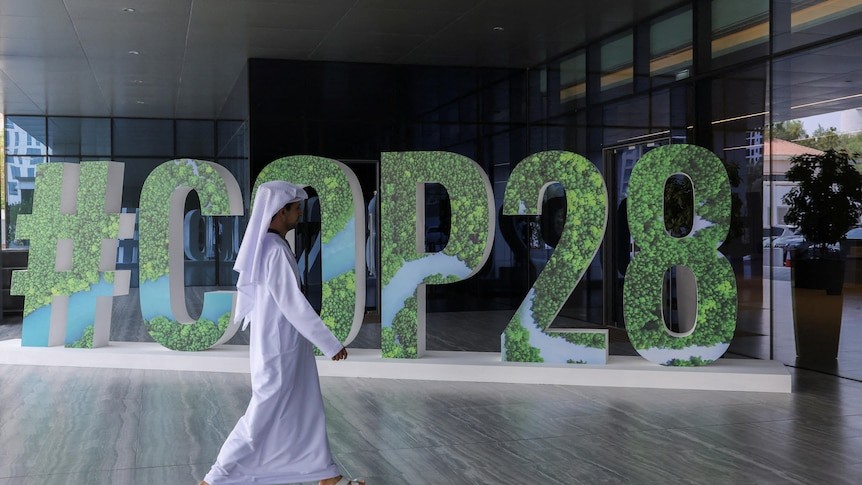Navigation
Install the app
How to install the app on iOS
Follow along with the video below to see how to install our site as a web app on your home screen.
Note: This feature may not be available in some browsers.
More options
You are using an out of date browser. It may not display this or other websites correctly.
You should upgrade or use an alternative browser.
You should upgrade or use an alternative browser.
Climate Change Arguing
- Thread starter Socrates2
- Start date
- Tagged users None
I couldn't find anything in there that mentioned the speed.what is the speed of the spinning core ?
Sent from my SM-A226B using Tapatalk
neither could II couldn't find anything in there that mentioned the speed.
Sent from my SM-A226B using Tapatalk
Gralin
Super Moderator
- Moderator
- #3,505
Some real big brain energy at this event it seemsSo how many of you have already bought tickets?
View attachment 1591418

- Jul 5, 2012
- 24,745
- 40,163
- AFL Club
- Sydney
- Other Teams
- Kidding, right?
Pardon the long post, The Saturday Paper is behind a paywall and not everyone is a subscriber (but they should be) but I thought Richard Denniss's sensible observations need to be read by all.
Richard Denniss
The climate wars are far from over. They will not be over until the fossil fuel industry stops waging them. While their progress has been slowed in recent years, the relentless bombardment of our future by the coal and gas industries continues unabated.
Take one example. In the same fortnight that the Intergovernmental Panel on Climate Change (IPCC) declared there could be no new fossil fuel projects if we are to avoid further climate catastrophe, the Australian minister for Resources, Madeleine King, made it clear that she supports lifting a moratorium on gas fields in Victoria.
Australian governments, state and federal, Labor and Liberal, have spent decades denying the need to confront the fossil fuel industry, either by refuting the science or by distracting us with accounting tricks. Yet the science of climate change is as simple as it is settled: it doesn’t matter where in the world Australia’s coal and gas are burned, the emissions will continue to cause the climate change that will ruin our reef and fuel the fires and floods that are already causing so much pain.
Since Kevin Rudd ratified the Kyoto Protocol in 2008, Australia’s coal production has increased by about 40 per cent and our gas production has tripled. In the year after the Paris Agreement was signed in 2015, Australia opened $80 billion worth of new liquefied natural gas (LNG) export facilities, making us the largest LNG exporter in the world. Even now, the fossil fuel industry is planning to spend hundreds of billions of dollars to build 116 new fossil fuel projects in Australia.
The fossil fuel industry’s war against our climate isn’t cheap, but it is profitable, which is why these industries have no intention of stopping their expansion.
Only our parliaments can protect us from the fossil fuel industry. The market cannot save us from the market failure of climate change, and while private investment in renewables, batteries and energy efficiency is necessary, these measures are not sufficient. The science says we need to stop building new fossil fuel infrastructure, stop destroying what’s left of our forests and start investing heavily in low-carbon technologies. Trying to avoid climate change without stopping fossil fuel expansion is like baking a cake with no oven or even a cake tin.
Which brings me to this week’s deal between Labor and the Greens to pass the so-called safeguard mechanism, one of the most significant and misunderstood pieces of legislation to be introduced into parliament in recent times.
The first thing to know about the safeguard mechanism is that it has been in place since 2016, having been developed by the Coalition to implement Tony Abbott’s Direct Action scheme after he repealed the carbon price.
The second thing to note, which is something even close readers of the commentary around the safeguard mechanism might have missed, is that the economy-wide carbon price that Abbott ripped up was the carbon price that Julia Gillard and Bob Brown successfully negotiated in 2012. Bizarrely, even Labor MPs have been arguing there has been no climate action since the Greens voted down Kevin Rudd’s carbon pollution reduction scheme back in 2009.
While Labor’s willingness to erase Gillard’s carbon price from history is surprising, the determination of many in the press gallery to define the Greens by the time they voted down a climate bill, rather than the time they negotiated one up, is harder to explain.
Labor clearly wanted to frame the debate about its amendments to Abbott’s safeguard mechanism as a test of whether the Greens would make “the perfect the enemy of the good”. The real trial test, however, was whether Chris Bowen and Anthony Albanese would adopt Kevin Rudd’s unsuccessful approach of telling the Greens to take it or leave it, or follow in Gillard’s footsteps and engage meaningfully. Many Labor and Greens voters seemed relieved the Gillard approach prevailed.
In addition to helping Labor avoid scrutiny of its approach to reform, the focus on whether the Greens would be “principled” or “pragmatic” concealed as much as it revealed. Despite the dire warning of the IPCC and the United Nations secretary-general, António Guterres, declaring our world needs climate action on all fronts, it seems few commentators in Australia think there is much need for, or electoral reward in, being principled. Similarly, the focus on the Greens’ political strategy came at the expense of discussing what the safeguard mechanism is, what it does and, perhaps more importantly, what it doesn’t do.
The safeguard mechanism has been in place for seven years, and in that time it has failed dismally to reduce greenhouse gas emissions. By design the scheme only applies to the largest “facilities” – those that emit more than 100,000 tonnes of carbon pollution each year. The majority of these facilities are gas projects and coalmines, although other big emitters, such as fertiliser factories, steel and aluminium mills and cement kilns, are also captured. The idea is that each polluter has to keep its emissions below a government-determined cap, but in practice the Coalition set the pollution caps so high they made no real difference.
Labor’s big amendment to the Coalition’s safeguard scheme was to set tougher caps on each of the big emitters, which seems like a good idea until you realise that Labor was not actually proposing that any polluter reduce its real emissions by a single tonne. While the net emissions from each polluter would decline each year, each polluter could buy as many “carbon offsets” as they wanted.
Labor’s original amendments not only had no limit on the actual emissions of the big polluters but no limit on the number of new polluters who would be allowed to open up and start polluting. As I said to the senate inquiry into the legislation last year, Labor was proposing a cap-and-trade scheme with no actual cap. That is why the Greens, climate scientists and most, but not all, climate groups are so concerned about new fossil fuel projects in the pipeline.
Then there’s the integrity of carbon offsets or, more specifically, the lack of it. While most people think carbon offsets have something to do with planting trees, the reality is the vast majority of offsets produced in Australia, and around the world, revolve around promises not to chop down trees. When being paid for not doing something is profitable, it’s easy to understand why so many people are queueing up to get paid for not doing things.
Unfortunately, both the climate scientists and those who question the validity of offsets have raised serious concerns about claims that it’s okay to build new coalmines as long as someone promised not to clear some trees. These credits do not reduce emissions: they are an accounting trick to greenwash their expansion.
The safeguard mechanism was designed by the Coalition after it won an election by claiming climate policies drove up the cost of living. That’s why the safeguard mechanism is so narrow that it does literally nothing to stimulate renewable energy investment, phase out coal-fired power stations, drive energy efficiency in our homes and offices or encourage us to switch away from enormous 4WD utes and into public transport or smaller vehicles.
This past week, the government made a series of amendments to its policy, for fear that the Greens might otherwise vote down Labor’s proposed changes. The most significant of these is likely the “hard cap” on actual emissions. This will require actual emissions to fall and will prevent new polluters that would breach that cap from opening up. The Greens also secured changes that will make it more expensive for new gas projects to open and, embarrassingly for those who championed the clean bill of health given to carbon offsets by Professor Ian Chubb, a new audit of the integrity of carbon credits.
The science, the votes and our Pacific neighbours have all made it clear that it is time for Australia to stop building new gas fields and coalmines. We are already the world’s third-largest fossil fuel exporter. Our own electricity sector will be using less coal and gas each year between now and 2050, and while it is “hard to abate” emissions from the cement industry at the moment, it is easy to avoid the pollution from the 116 fossil fuel projects that are yet to be built. Labor’s policy – against the clear advice of the IPCC and others – will still allow half, or more, of these projects to go ahead.
Tackling climate change isn’t as difficult as the fossil fuel industry wants to make out. The simplest way to reduce emissions is to phase out the fossil fuel industry. Yet while the science and economics of tackling climate change are pretty simple – for clarity: stop subsidising and building things that increase emissions and start building more things that reduce them – the politics of confronting the fossil fuel industry remain as hard as ever. The Greens’ amendments to Labor’s climate policy show it is possible to slow the fossil fuel industry down but, with the two major parties still supporting fossil fuel expansion, it’s not at all clear if or when Australia will ever win its war with the fossil fuel industry.
Richard Denniss
What the safeguard means for the climate wars
The climate wars are far from over. They will not be over until the fossil fuel industry stops waging them. While their progress has been slowed in recent years, the relentless bombardment of our future by the coal and gas industries continues unabated.
Take one example. In the same fortnight that the Intergovernmental Panel on Climate Change (IPCC) declared there could be no new fossil fuel projects if we are to avoid further climate catastrophe, the Australian minister for Resources, Madeleine King, made it clear that she supports lifting a moratorium on gas fields in Victoria.
Australian governments, state and federal, Labor and Liberal, have spent decades denying the need to confront the fossil fuel industry, either by refuting the science or by distracting us with accounting tricks. Yet the science of climate change is as simple as it is settled: it doesn’t matter where in the world Australia’s coal and gas are burned, the emissions will continue to cause the climate change that will ruin our reef and fuel the fires and floods that are already causing so much pain.
Since Kevin Rudd ratified the Kyoto Protocol in 2008, Australia’s coal production has increased by about 40 per cent and our gas production has tripled. In the year after the Paris Agreement was signed in 2015, Australia opened $80 billion worth of new liquefied natural gas (LNG) export facilities, making us the largest LNG exporter in the world. Even now, the fossil fuel industry is planning to spend hundreds of billions of dollars to build 116 new fossil fuel projects in Australia.
The fossil fuel industry’s war against our climate isn’t cheap, but it is profitable, which is why these industries have no intention of stopping their expansion.
Only our parliaments can protect us from the fossil fuel industry. The market cannot save us from the market failure of climate change, and while private investment in renewables, batteries and energy efficiency is necessary, these measures are not sufficient. The science says we need to stop building new fossil fuel infrastructure, stop destroying what’s left of our forests and start investing heavily in low-carbon technologies. Trying to avoid climate change without stopping fossil fuel expansion is like baking a cake with no oven or even a cake tin.
Which brings me to this week’s deal between Labor and the Greens to pass the so-called safeguard mechanism, one of the most significant and misunderstood pieces of legislation to be introduced into parliament in recent times.
The first thing to know about the safeguard mechanism is that it has been in place since 2016, having been developed by the Coalition to implement Tony Abbott’s Direct Action scheme after he repealed the carbon price.
The second thing to note, which is something even close readers of the commentary around the safeguard mechanism might have missed, is that the economy-wide carbon price that Abbott ripped up was the carbon price that Julia Gillard and Bob Brown successfully negotiated in 2012. Bizarrely, even Labor MPs have been arguing there has been no climate action since the Greens voted down Kevin Rudd’s carbon pollution reduction scheme back in 2009.
While Labor’s willingness to erase Gillard’s carbon price from history is surprising, the determination of many in the press gallery to define the Greens by the time they voted down a climate bill, rather than the time they negotiated one up, is harder to explain.
Labor clearly wanted to frame the debate about its amendments to Abbott’s safeguard mechanism as a test of whether the Greens would make “the perfect the enemy of the good”. The real trial test, however, was whether Chris Bowen and Anthony Albanese would adopt Kevin Rudd’s unsuccessful approach of telling the Greens to take it or leave it, or follow in Gillard’s footsteps and engage meaningfully. Many Labor and Greens voters seemed relieved the Gillard approach prevailed.
In addition to helping Labor avoid scrutiny of its approach to reform, the focus on whether the Greens would be “principled” or “pragmatic” concealed as much as it revealed. Despite the dire warning of the IPCC and the United Nations secretary-general, António Guterres, declaring our world needs climate action on all fronts, it seems few commentators in Australia think there is much need for, or electoral reward in, being principled. Similarly, the focus on the Greens’ political strategy came at the expense of discussing what the safeguard mechanism is, what it does and, perhaps more importantly, what it doesn’t do.
The safeguard mechanism has been in place for seven years, and in that time it has failed dismally to reduce greenhouse gas emissions. By design the scheme only applies to the largest “facilities” – those that emit more than 100,000 tonnes of carbon pollution each year. The majority of these facilities are gas projects and coalmines, although other big emitters, such as fertiliser factories, steel and aluminium mills and cement kilns, are also captured. The idea is that each polluter has to keep its emissions below a government-determined cap, but in practice the Coalition set the pollution caps so high they made no real difference.
Labor’s big amendment to the Coalition’s safeguard scheme was to set tougher caps on each of the big emitters, which seems like a good idea until you realise that Labor was not actually proposing that any polluter reduce its real emissions by a single tonne. While the net emissions from each polluter would decline each year, each polluter could buy as many “carbon offsets” as they wanted.
Labor’s original amendments not only had no limit on the actual emissions of the big polluters but no limit on the number of new polluters who would be allowed to open up and start polluting. As I said to the senate inquiry into the legislation last year, Labor was proposing a cap-and-trade scheme with no actual cap. That is why the Greens, climate scientists and most, but not all, climate groups are so concerned about new fossil fuel projects in the pipeline.
Then there’s the integrity of carbon offsets or, more specifically, the lack of it. While most people think carbon offsets have something to do with planting trees, the reality is the vast majority of offsets produced in Australia, and around the world, revolve around promises not to chop down trees. When being paid for not doing something is profitable, it’s easy to understand why so many people are queueing up to get paid for not doing things.
Unfortunately, both the climate scientists and those who question the validity of offsets have raised serious concerns about claims that it’s okay to build new coalmines as long as someone promised not to clear some trees. These credits do not reduce emissions: they are an accounting trick to greenwash their expansion.
The safeguard mechanism was designed by the Coalition after it won an election by claiming climate policies drove up the cost of living. That’s why the safeguard mechanism is so narrow that it does literally nothing to stimulate renewable energy investment, phase out coal-fired power stations, drive energy efficiency in our homes and offices or encourage us to switch away from enormous 4WD utes and into public transport or smaller vehicles.
This past week, the government made a series of amendments to its policy, for fear that the Greens might otherwise vote down Labor’s proposed changes. The most significant of these is likely the “hard cap” on actual emissions. This will require actual emissions to fall and will prevent new polluters that would breach that cap from opening up. The Greens also secured changes that will make it more expensive for new gas projects to open and, embarrassingly for those who championed the clean bill of health given to carbon offsets by Professor Ian Chubb, a new audit of the integrity of carbon credits.
The science, the votes and our Pacific neighbours have all made it clear that it is time for Australia to stop building new gas fields and coalmines. We are already the world’s third-largest fossil fuel exporter. Our own electricity sector will be using less coal and gas each year between now and 2050, and while it is “hard to abate” emissions from the cement industry at the moment, it is easy to avoid the pollution from the 116 fossil fuel projects that are yet to be built. Labor’s policy – against the clear advice of the IPCC and others – will still allow half, or more, of these projects to go ahead.
Tackling climate change isn’t as difficult as the fossil fuel industry wants to make out. The simplest way to reduce emissions is to phase out the fossil fuel industry. Yet while the science and economics of tackling climate change are pretty simple – for clarity: stop subsidising and building things that increase emissions and start building more things that reduce them – the politics of confronting the fossil fuel industry remain as hard as ever. The Greens’ amendments to Labor’s climate policy show it is possible to slow the fossil fuel industry down but, with the two major parties still supporting fossil fuel expansion, it’s not at all clear if or when Australia will ever win its war with the fossil fuel industry.
SBD Gonzalez they recently got a takeover offer at $2.50 but trading above that at $2.72.Hey SBD Gonzalez LTR up another lazy 22% again to 41.5c, buying in a heap at 5.6c not a bad call from some bloke you called too stupid to invest in renewables.
Got my mate on to CHN at 50c but unfortunately I passed up at buying at around $1 myself.
Meet the other Goyder, who just made $225m

Last edited:
- Jul 5, 2012
- 24,745
- 40,163
- AFL Club
- Sydney
- Other Teams
- Kidding, right?
The business that exists only on predicting the likelihood of events with a useable degree of accuracy is not only hugely bumping up its prices, but massively declining bad business risks because their analysis shows an increasing likelihood of climate disasters.

 www.smh.com.au
www.smh.com.au
Looming insurance crisis could make the GFC ‘look like a picnic’
If the blowout in insurance premiums – both here and overseas – is not dealt with soon, we could be forced to face a reckoning nobody is ready for, least of all the global economy.
Power Raid
We Exist To Win Premierships
SBD Gonzalez they recently got a takeover offer at $2.50 but trading above that at $2.72.
View attachment 1666104
who would have thought there were such riches just 1-2 hours out of perth
more to be had in that region
1-2 hours out of perth
Too cryptic for me. What is 1-2 hours out of Perth ?
- Sep 17, 2019
- 22,341
- 35,392
- AFL Club
- Richmond
- Moderator
- #3,512
Too cryptic for me. What is 1-2 hours out of Perth ?
Texas?
Power Raid
We Exist To Win Premierships
Too cryptic for me. What is 1-2 hours out of Perth ?
CHN's asset
CHN's asset
Tim Goyder has done well.
I bought AZS a while back at an average of 40c too, now trading near $3.who would have thought there were such riches just 1-2 hours out of perth
more to be had in that region
That's looking like some find and even has the original nickel, copper and cobalt resource in the same spot but broadly I think at the explorer end we are bit of a lithium bubble.
Can recommend for you, the Quindanning Hotel .... good 2 hours.Texas?

Welcome to the Quindanning Hotel
- Oct 4, 2016
- 7,419
- 11,673
- AFL Club
- Richmond
If you could get all of the cops and put them on a rotational device hooked up to a generator and then pipe “greenie protestor” in one ear and -“Nazi protester” in the other, surely that’s an infinite energy hack
Fossil fuel phase-out deal seen as huge step forward by many as COP28 draws to a close
The key takeaways from the summit are a transition away from fossil fuels, a tripling of renewable energy and committing to stop adding carbon dioxide to the atmosphere by mid-century.
Some people say big news , some say not.
Gralin
Super Moderator
- Moderator
- #3,522
yeah its interesting how all the articles are focusing on the Saudis and not like the United States who basically said you guys should all do this but we're not going to, but you should
Fossil fuel phase-out deal seen as huge step forward by many as COP28 draws to a close
The key takeaways from the summit are a transition away from fossil fuels, a tripling of renewable energy and committing to stop adding carbon dioxide to the atmosphere by mid-century.www.abc.net.au
Some people say big news , some say not.
Better Loosen Up
Brownlow Medallist
The whole thing's a massive sham.
Probably one of the biggest problems is world leaders knowing there is a problem , but wanting everyone else to do something about ityeah its interesting how all the articles are focusing on the Saudis and not like the United States who basically said you guys should all do this but we're not going to, but you should
You are lucky to live in a country where people with your shortcomings can still live in comfort.The whole thing's a massive sham.
If only we could swap you out with those already suffering, it would be a win win for all.



